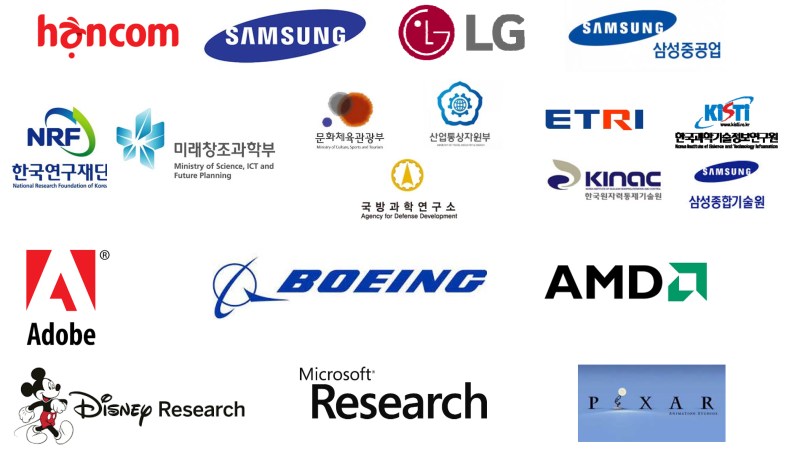We develop scalable methods for various graphics and geometric applications. In addition, we expand our research area to various fields of computer graphics, computer vision, and robotics.

Research Areas
We are currently working on three applications: Rendering, Vision, and Robotics. These applications seem to be very different, but their core engines require scalable proximity computing. As a result, we focus on designing scalable proximity computing and their applications to those high-level applications.
Rendering (papers)
SGVR Lab has great expertise in rendering. We have covered several topics including rasterization, ray-tracing and neural rendering. Please refer to an on-going book by Prof. Yoon to learn more about the topics. Here, we have selected our recent rendering-related work.
Artificial intelligence + rendering
Recently, we are actively studying the neural rendering area where we integrate neural networks for a new paradigm of rendering.
Blockchain for 3D models
Computer Vision (papers)
Image search is a field where the proximity computing is required. Useful concepts for image search have been developed and extended to various vision applications. Here’s a list of recent papers.
Large-scale image search
Other applications
We are also interested in various topics of computer vision with machine-learning, including optical flow, inpainting, and reflection removal.
Robotics (papers)
We also have extensively studied the field of robotics, with special expertise in motion planning. Furthermore, we want robots to better understand the environment via sensors, including 3D point cloud (LiDAR) and even sound (microphones). Recently, we are also integrating deep learning based approach to our robotics research. We selected recent papers here.
Mapping & Motion Planning
Sound localization
Legacy Techniques
In the history of our lab, we focused on the techniques listed below, which are not buried, but ready to be revisited and re-discovered in a new perspective.
To design scalable applications, we work on various orthogonal technologies: